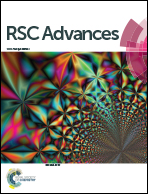Nanotherapy on human acute myeloid leukemia cells using RGO/Ag nanocomposites
Abstract
Nanoscale delivery systems are the newest modes of treatment as vehicles for antineoplastic agents in human hematology malignancies treatment research because of their targeting and multifunctional behaviour. The purpose of this study is to evaluate the anticancer effect of graphene oxide (GO), reduced graphene oxide (RGO), silver nanoparticles (Ag NPs) and reduced graphene oxide/silver nanocomposites (RGO/Ag) on human acute myeloid leukemia cells. In this context, RGO/Ag nanocomposites are synthesized via a green method using lactulose as a reducing as well as stabilizing agent. RGO/Ag nanocomposites have been characterized by Raman spectroscopy, thermo-gravimetric analysis and field emission scanning electron microscopy. RGO/Ag nanocomposites shows better anticancer activity than GO, RGO and Ag NPs. RGO/Ag nanocomposites exposed human acute myeloid leukemia cell show the possible contribution of apoptosis in the etiology of cell death.


 Please wait while we load your content...
Please wait while we load your content...